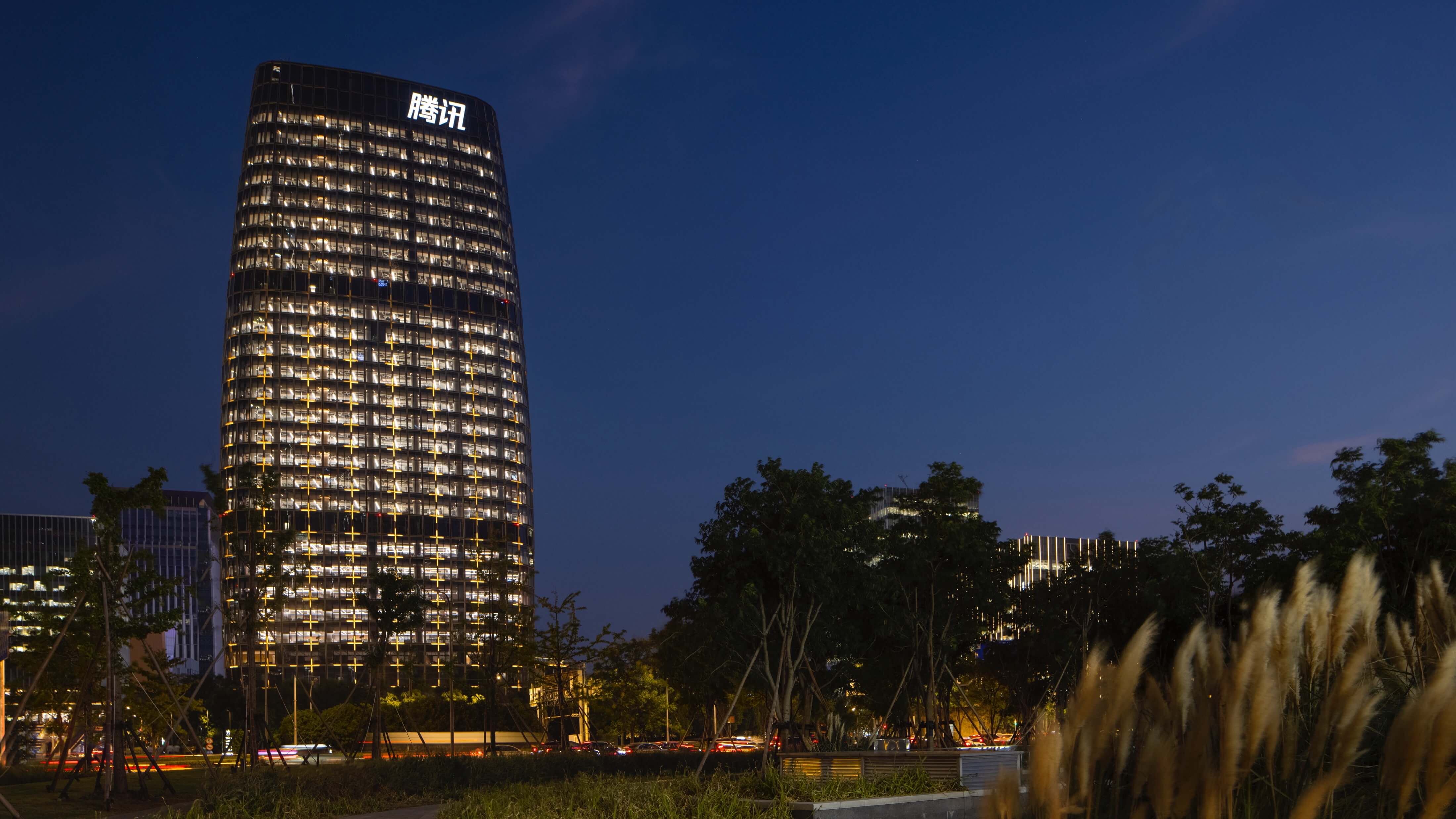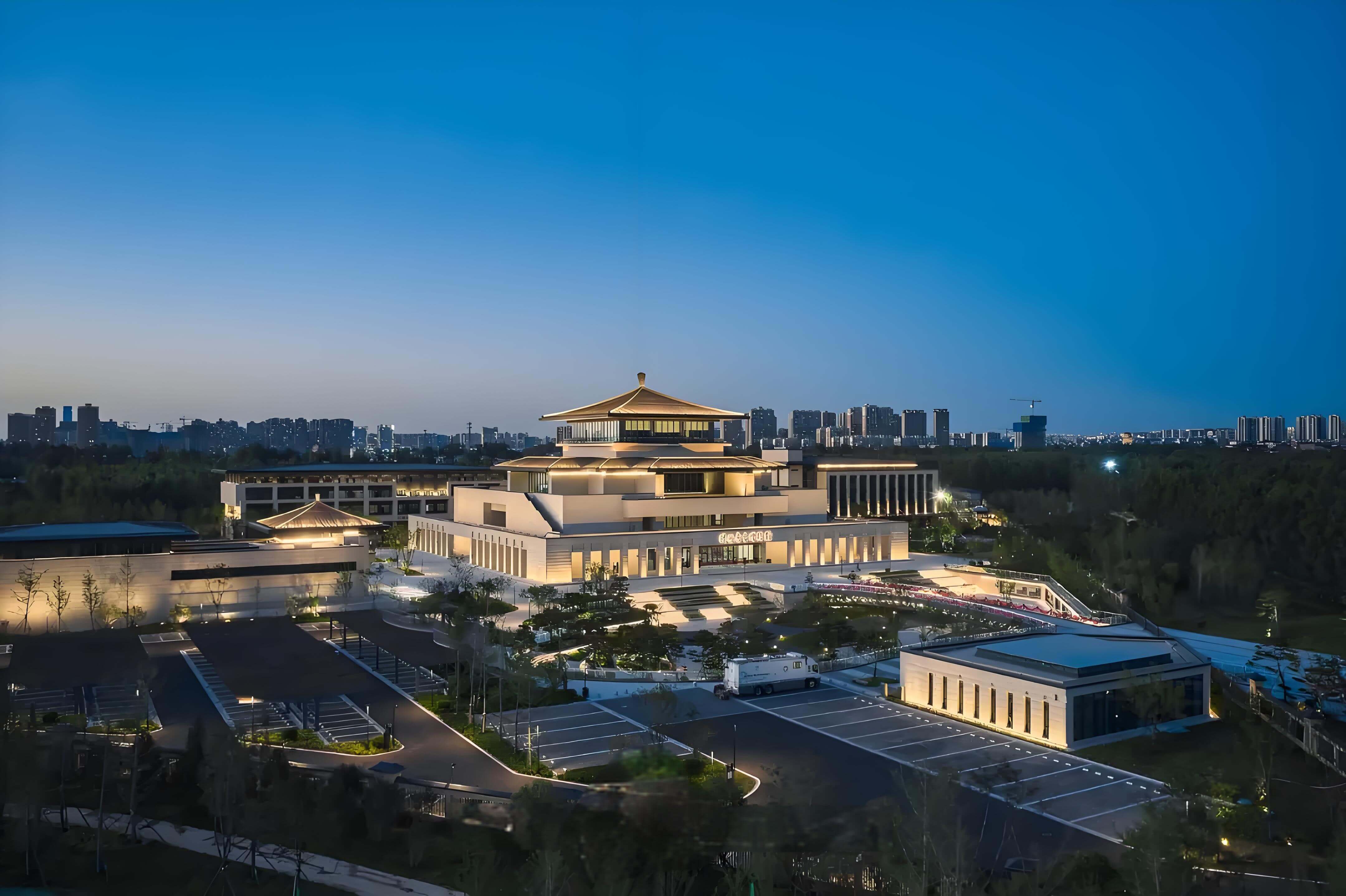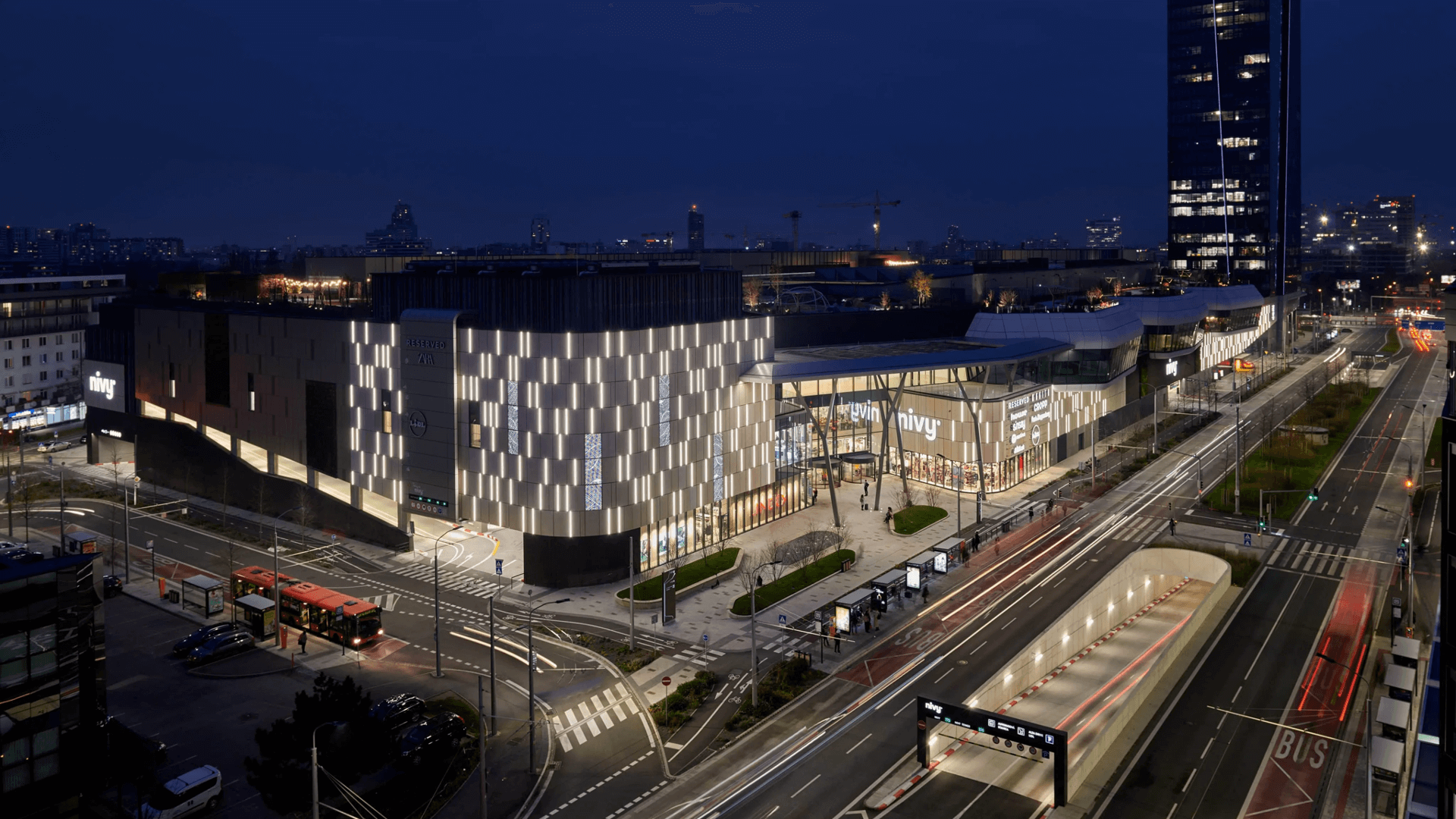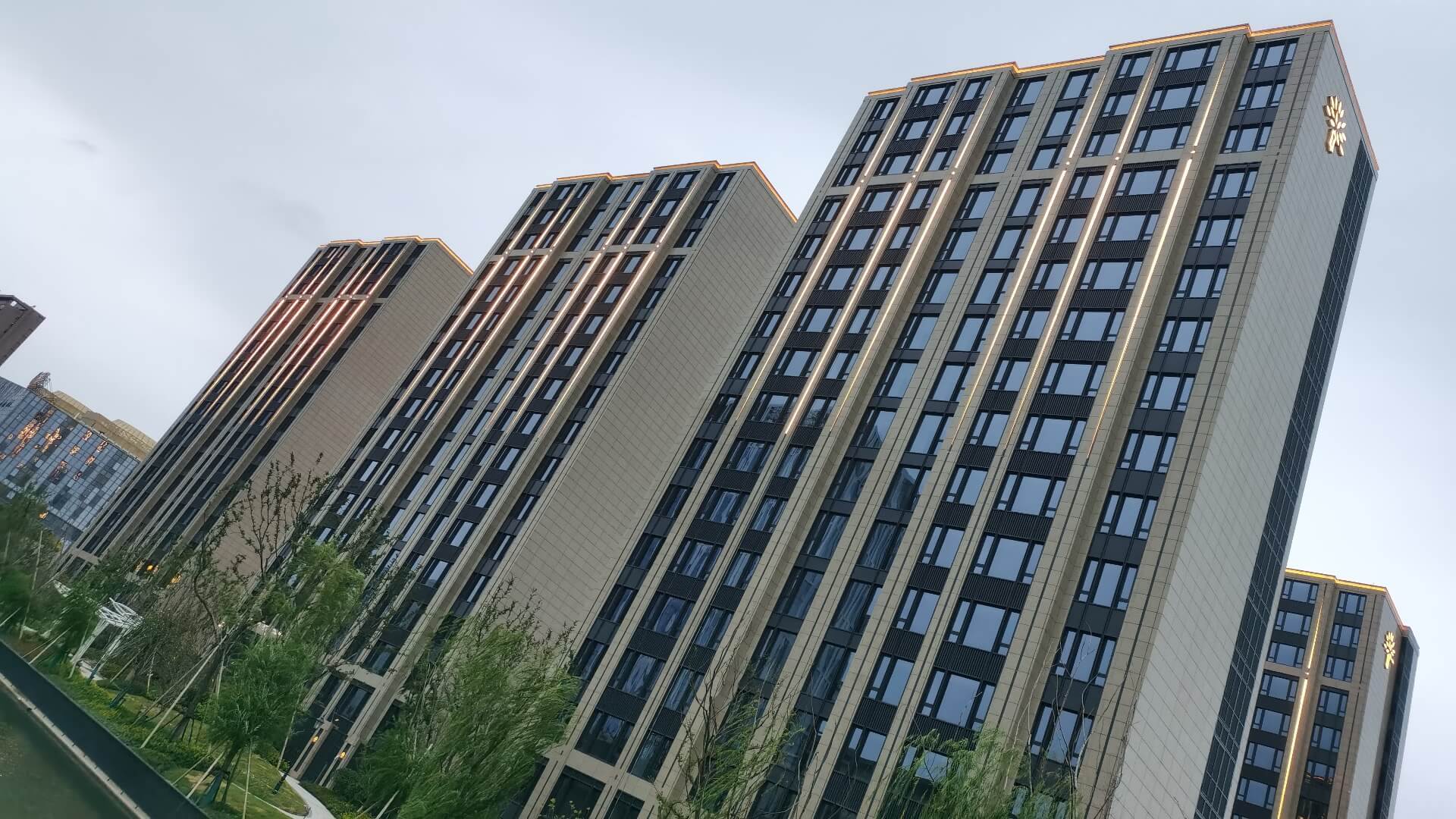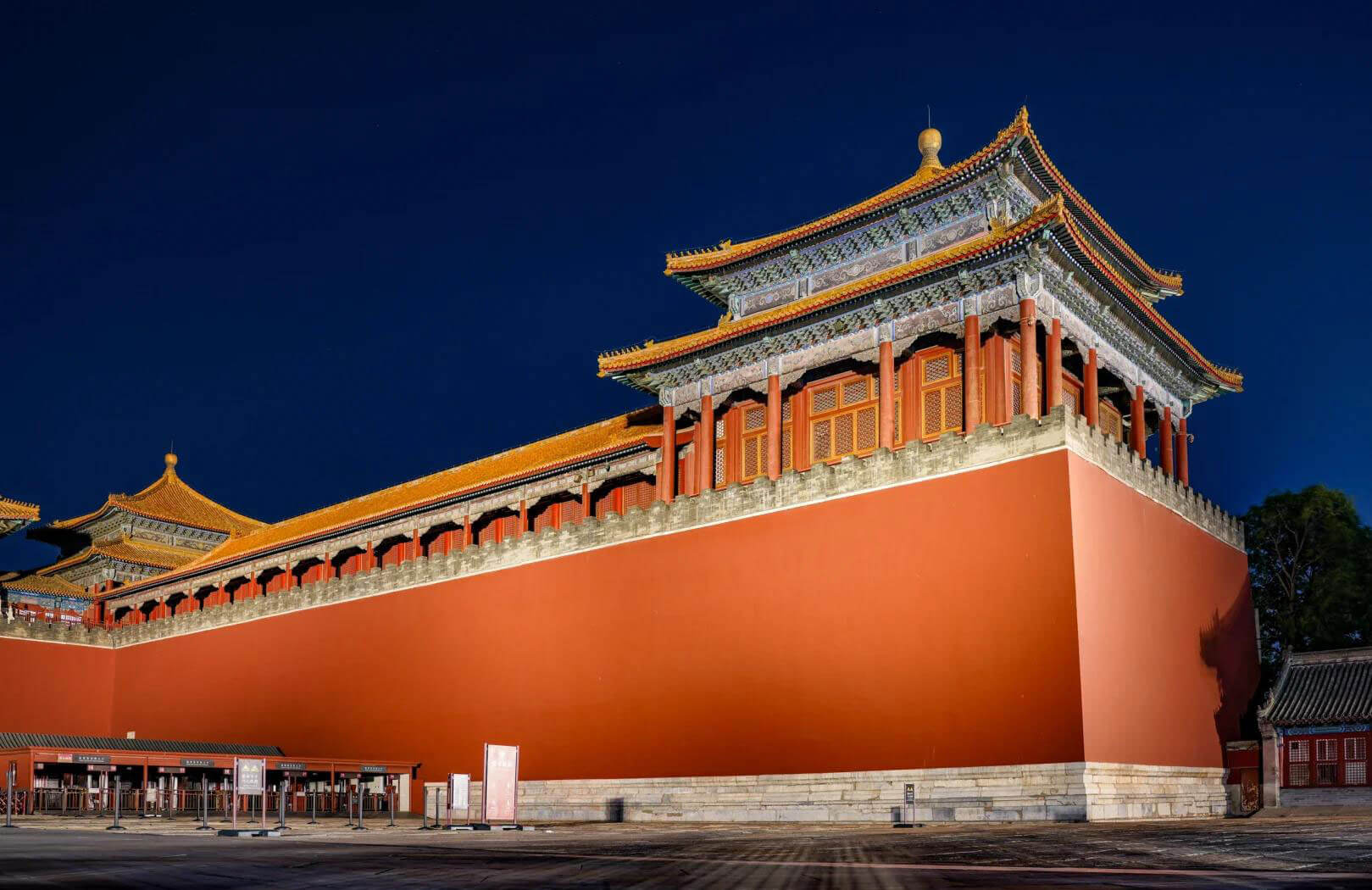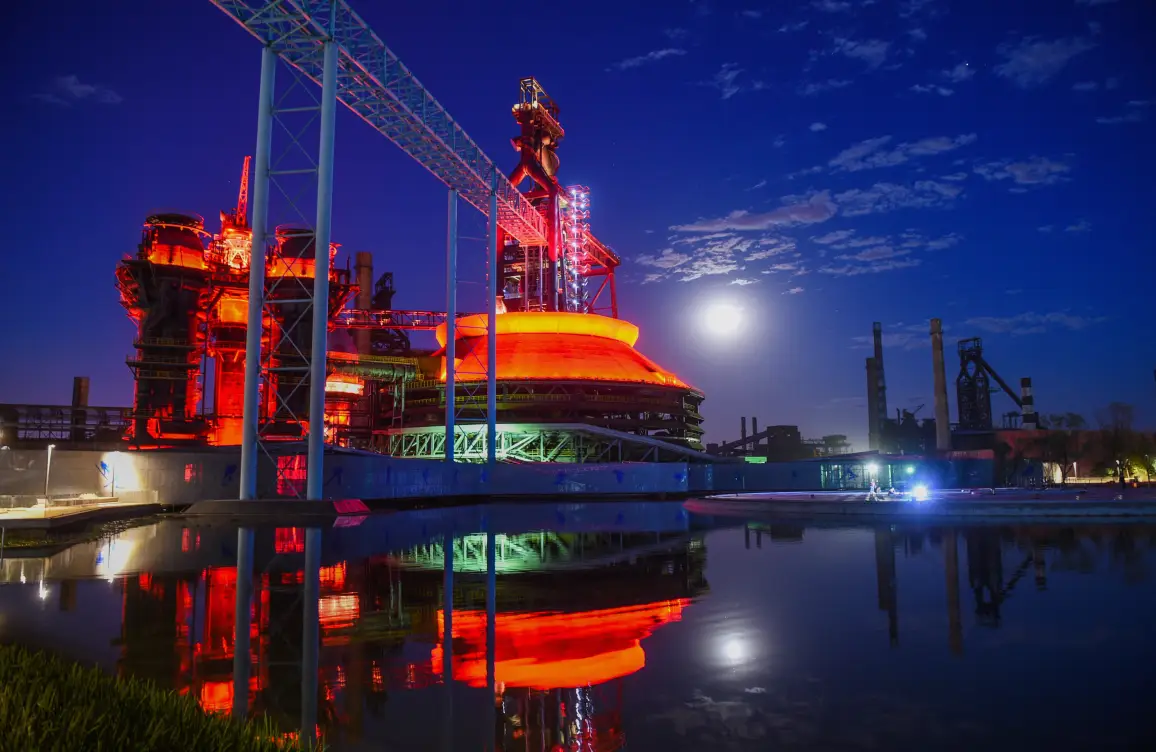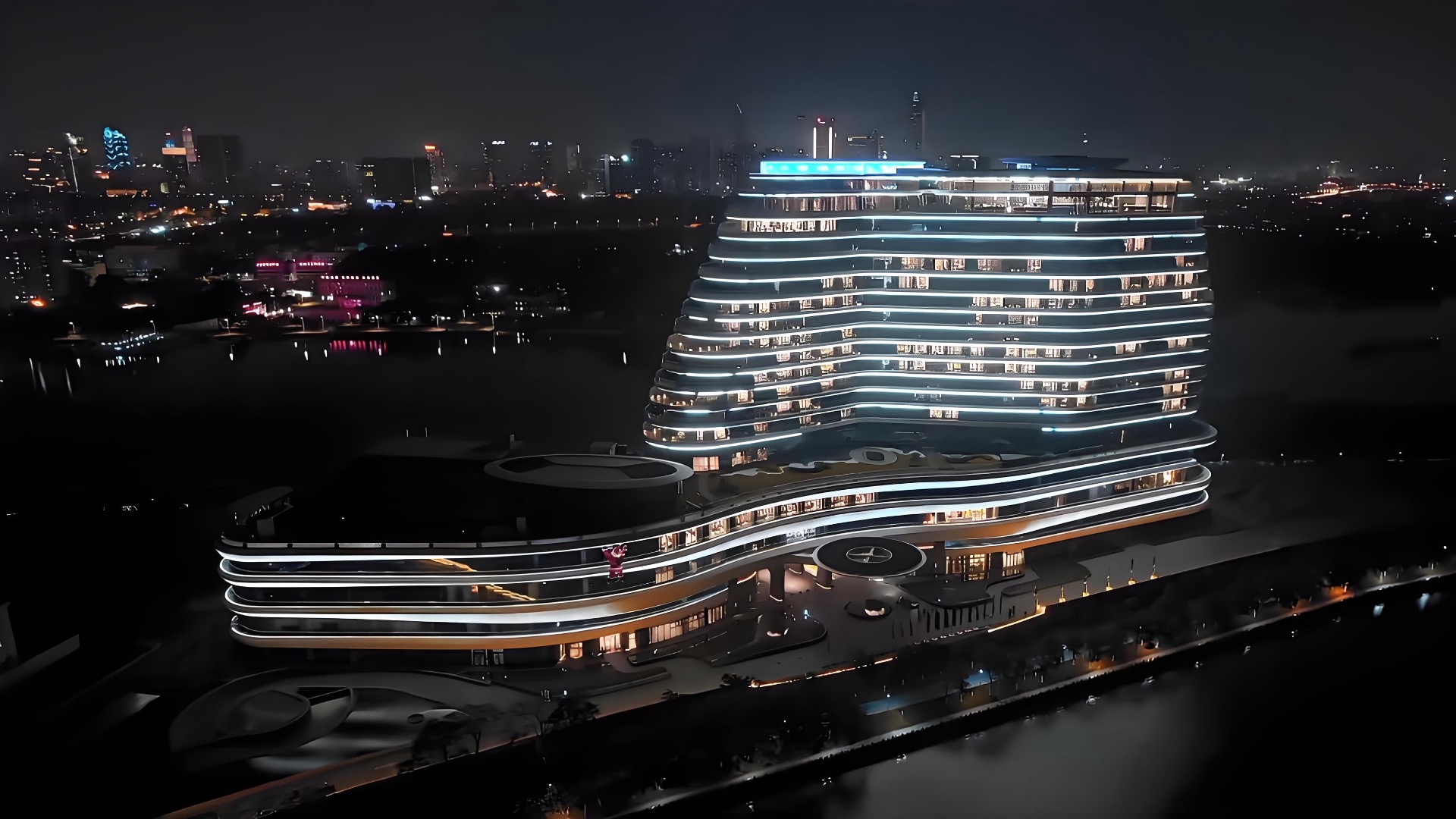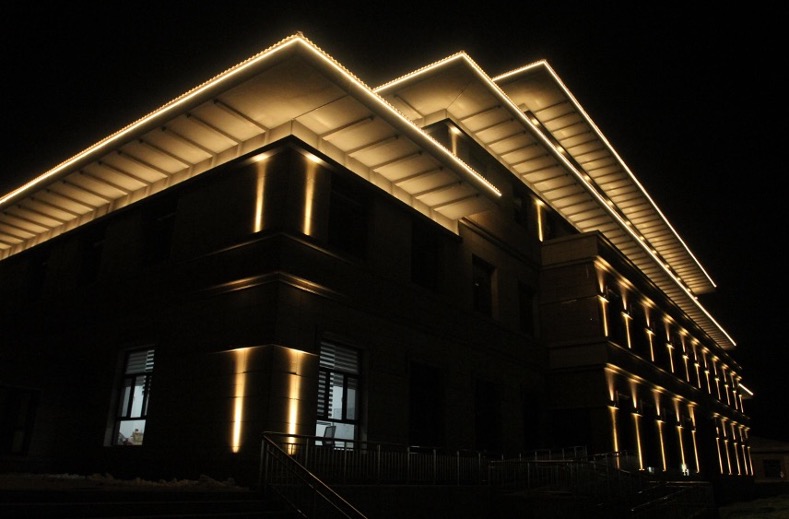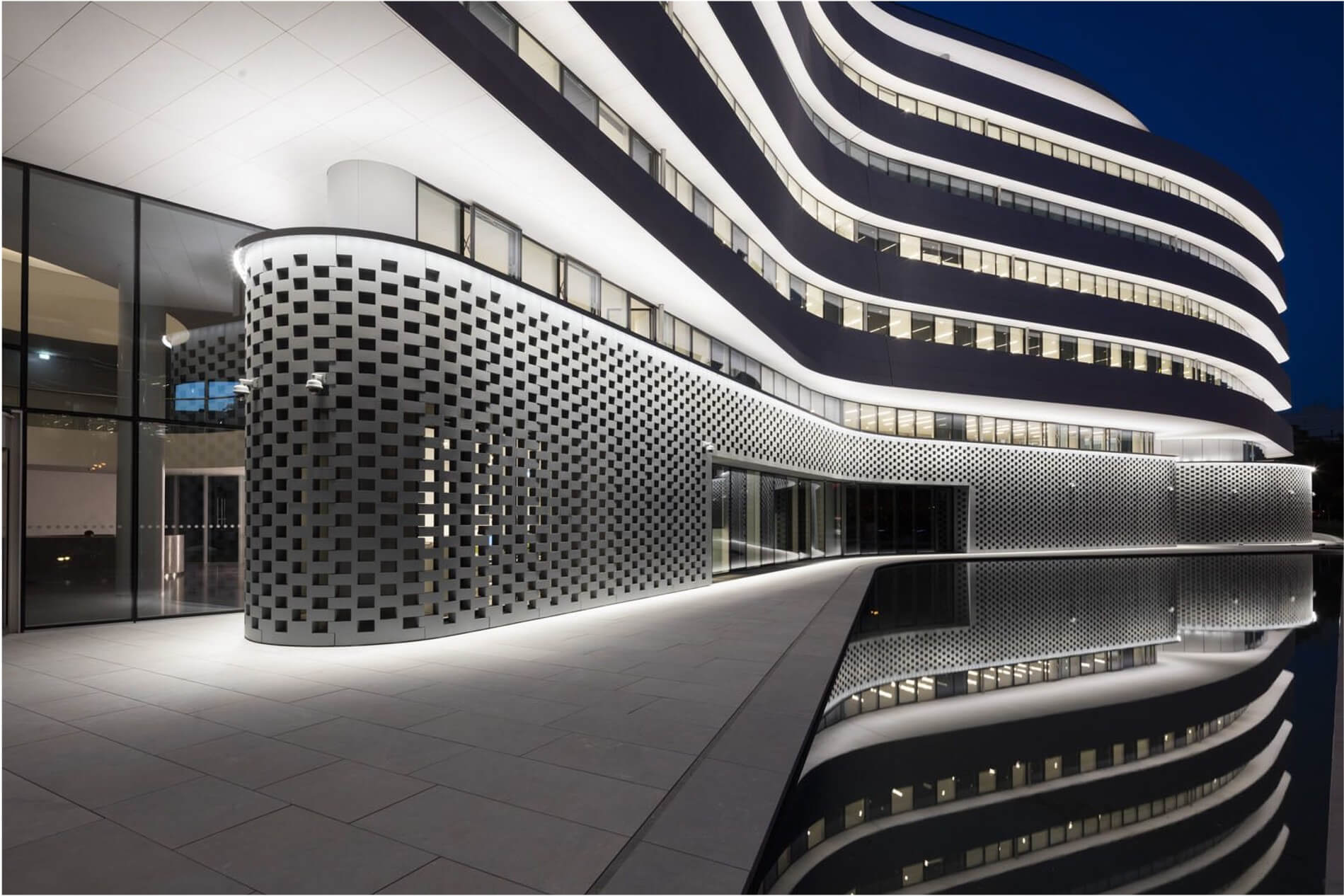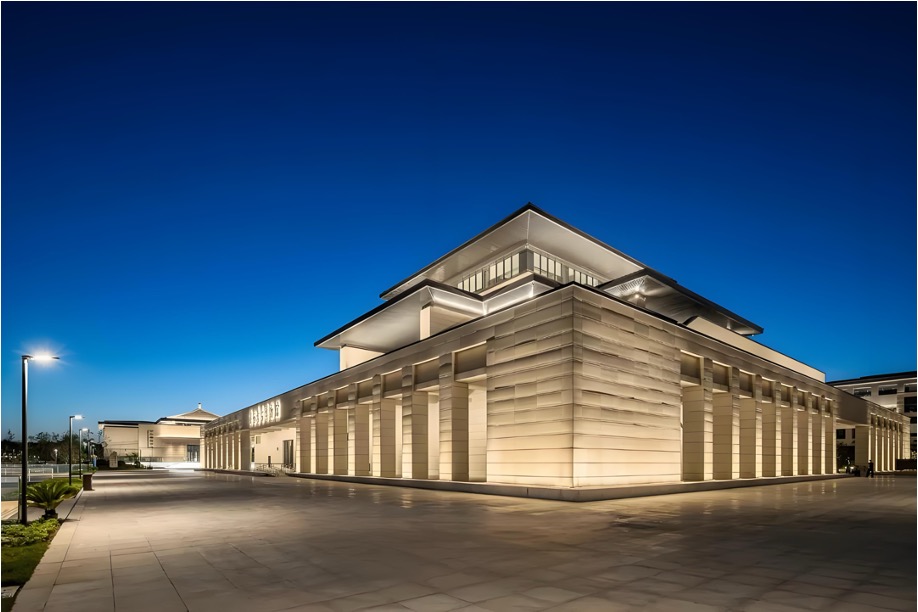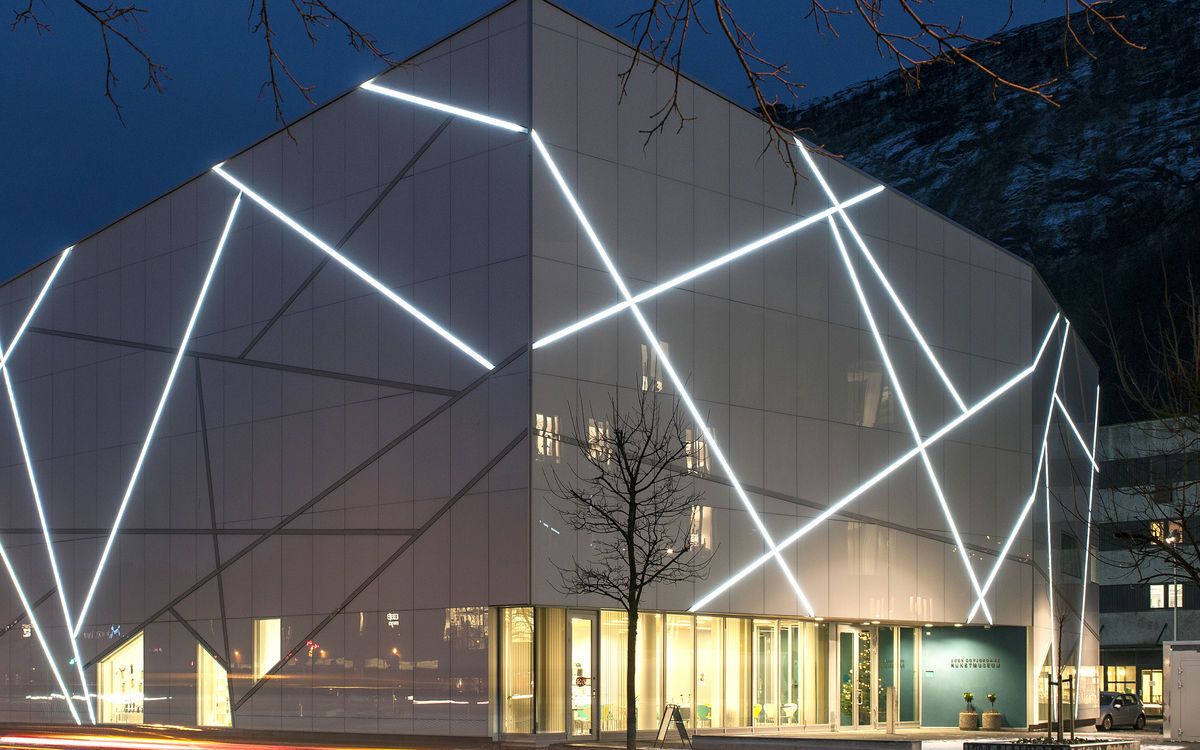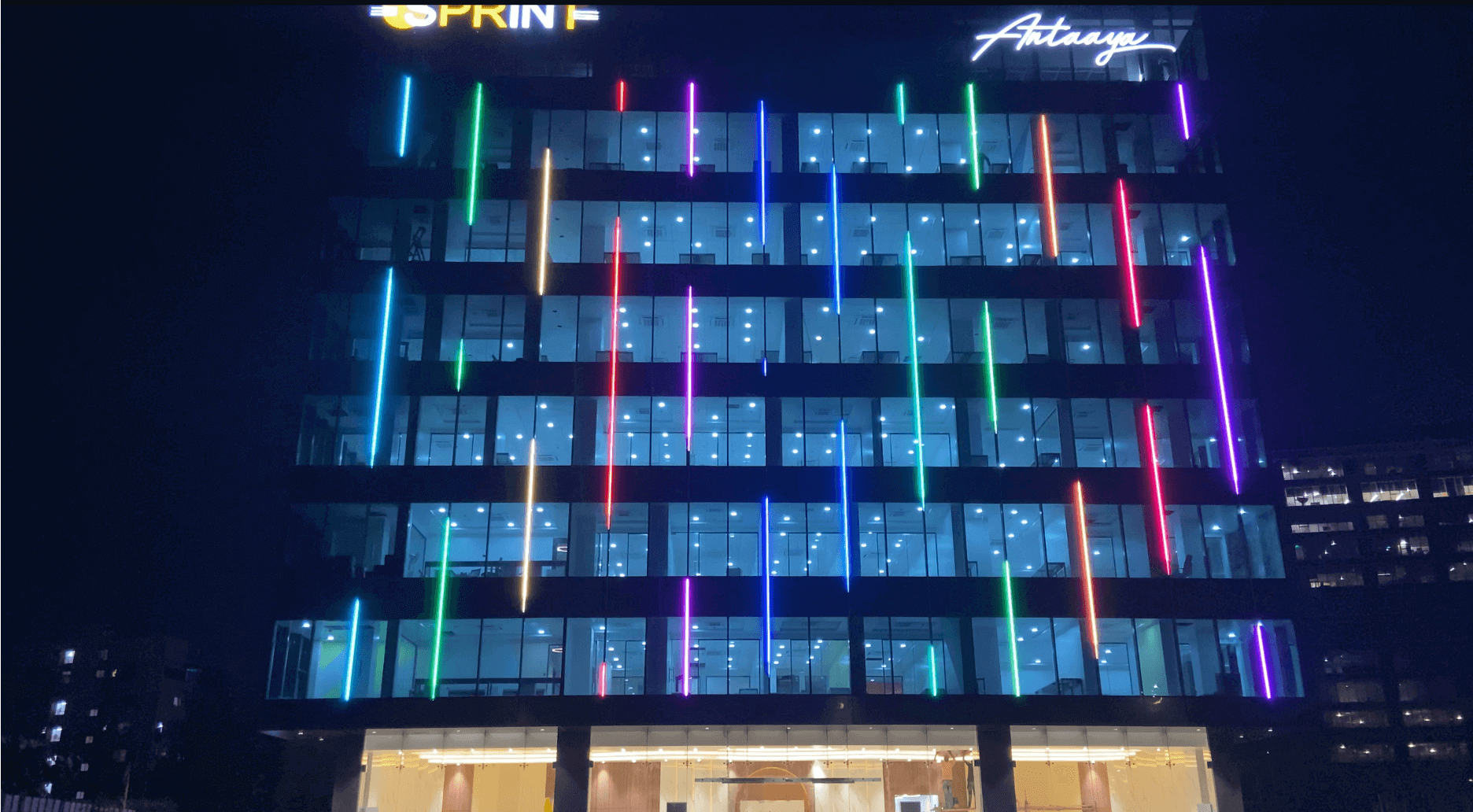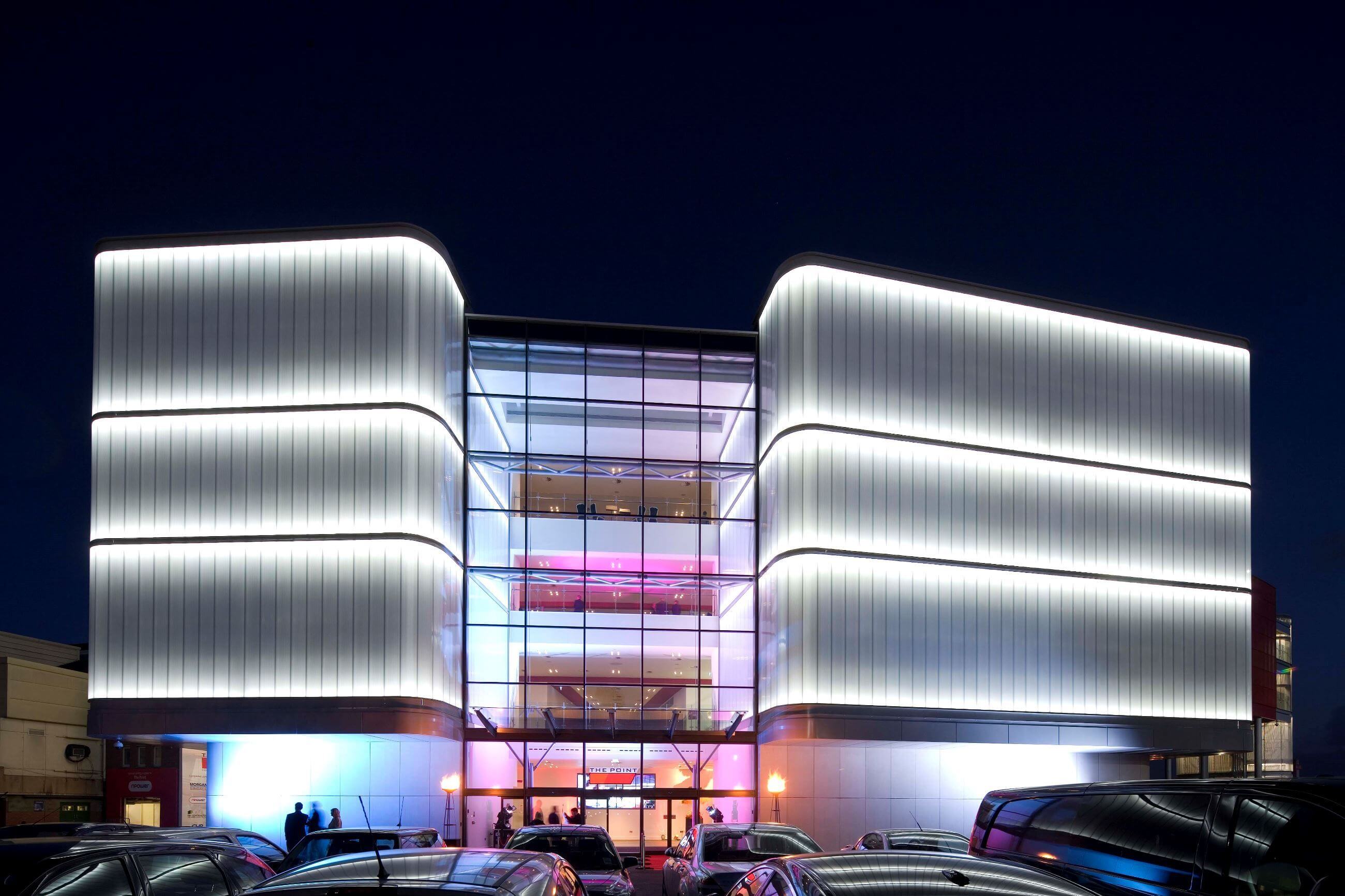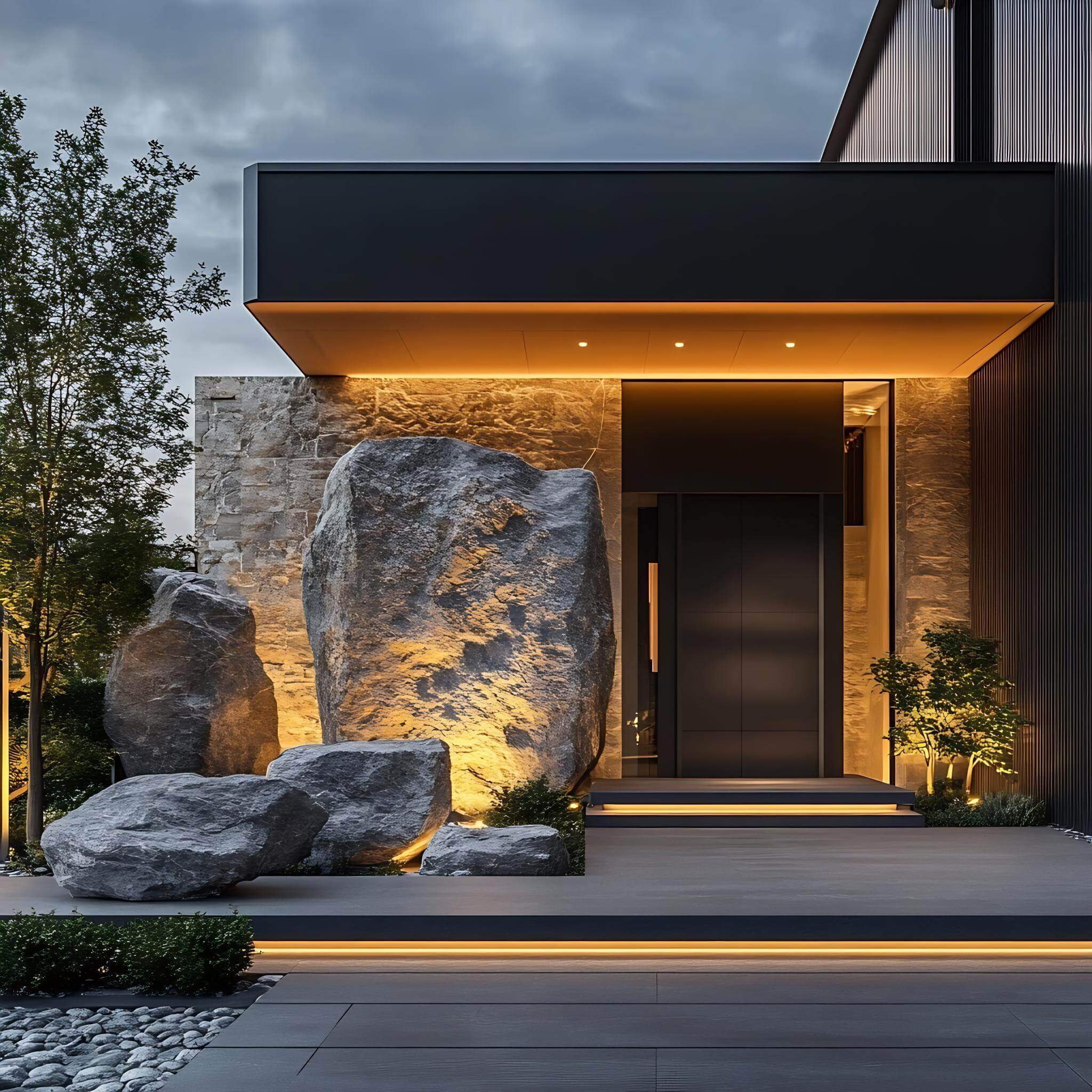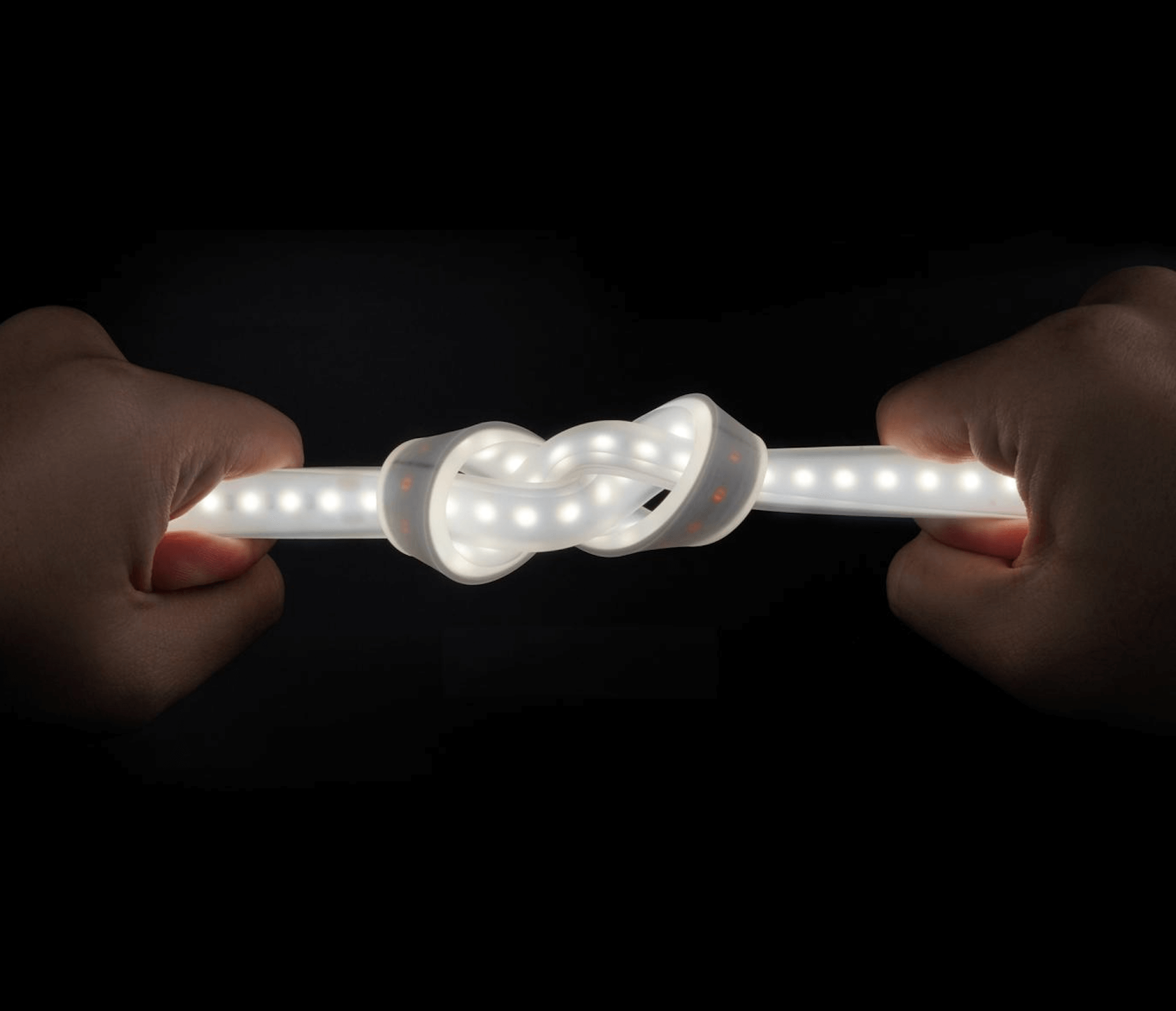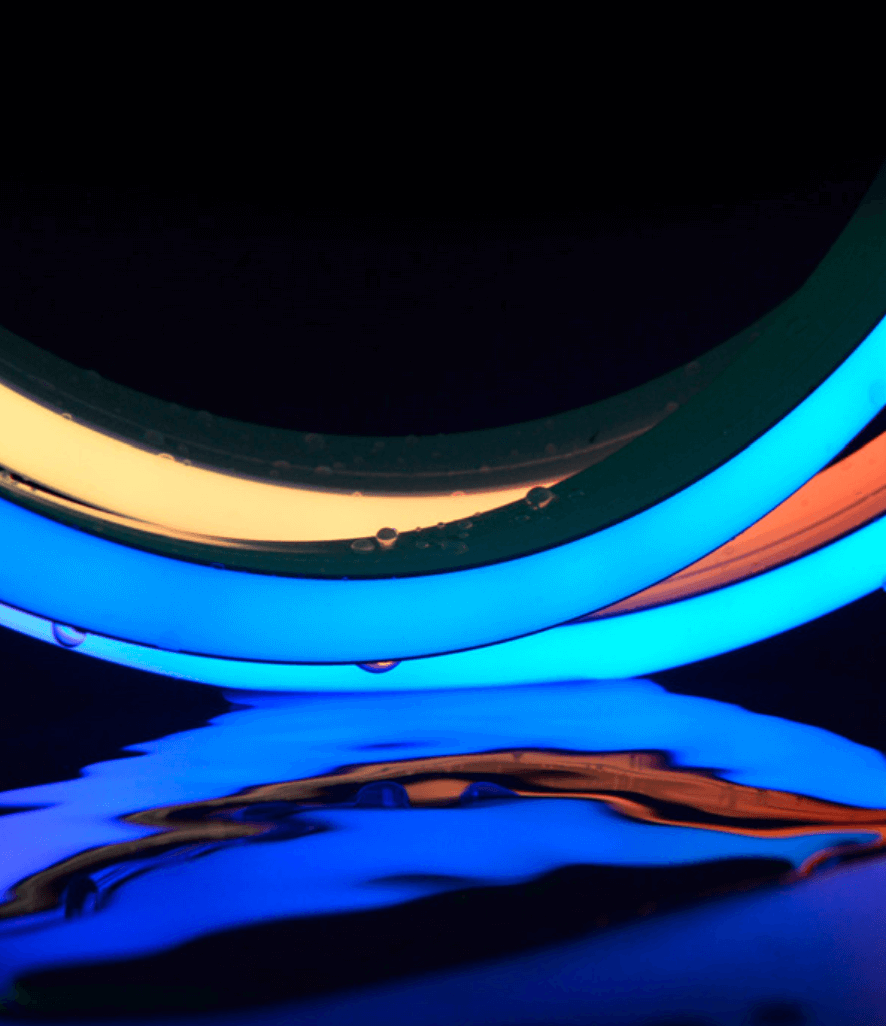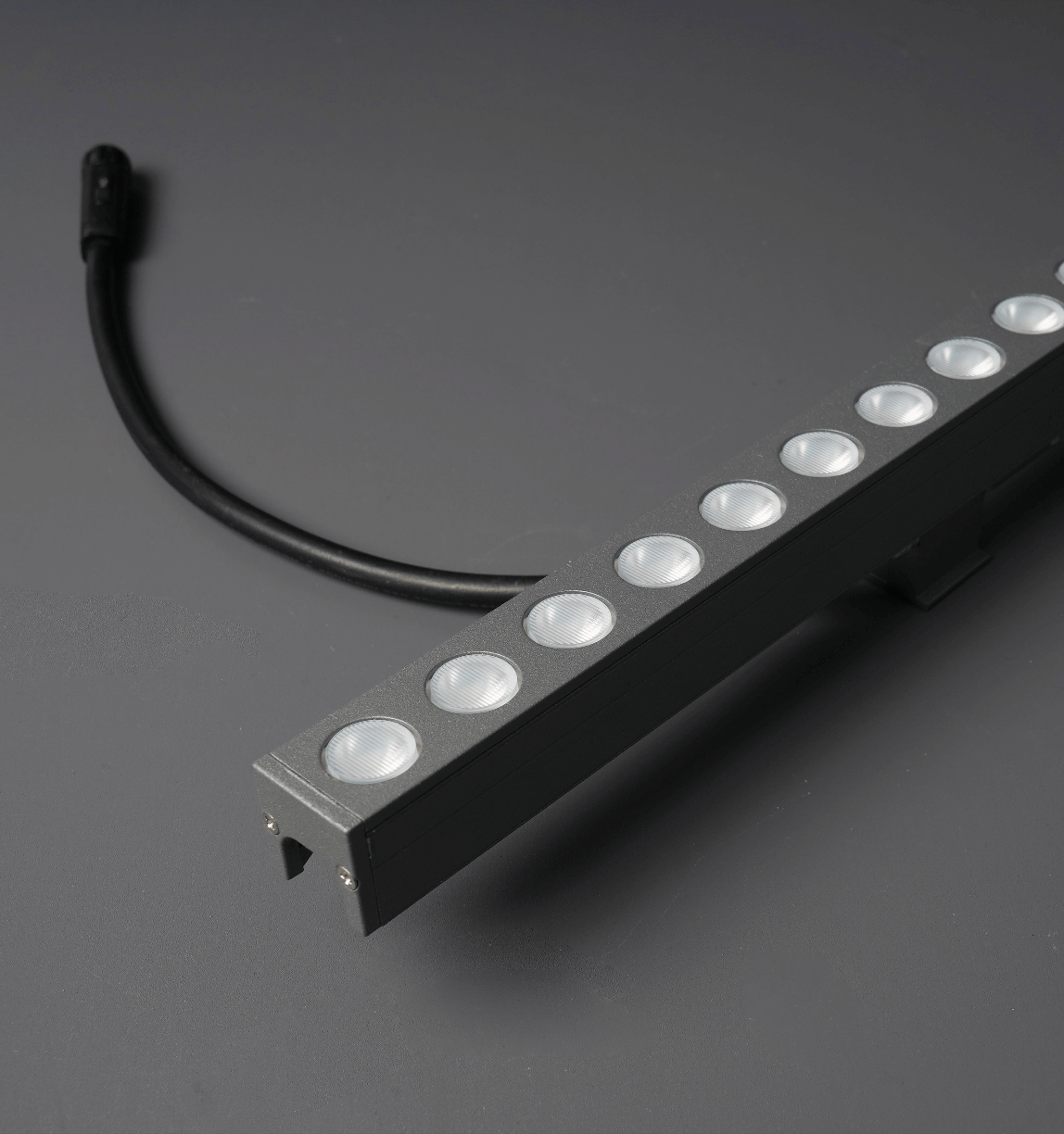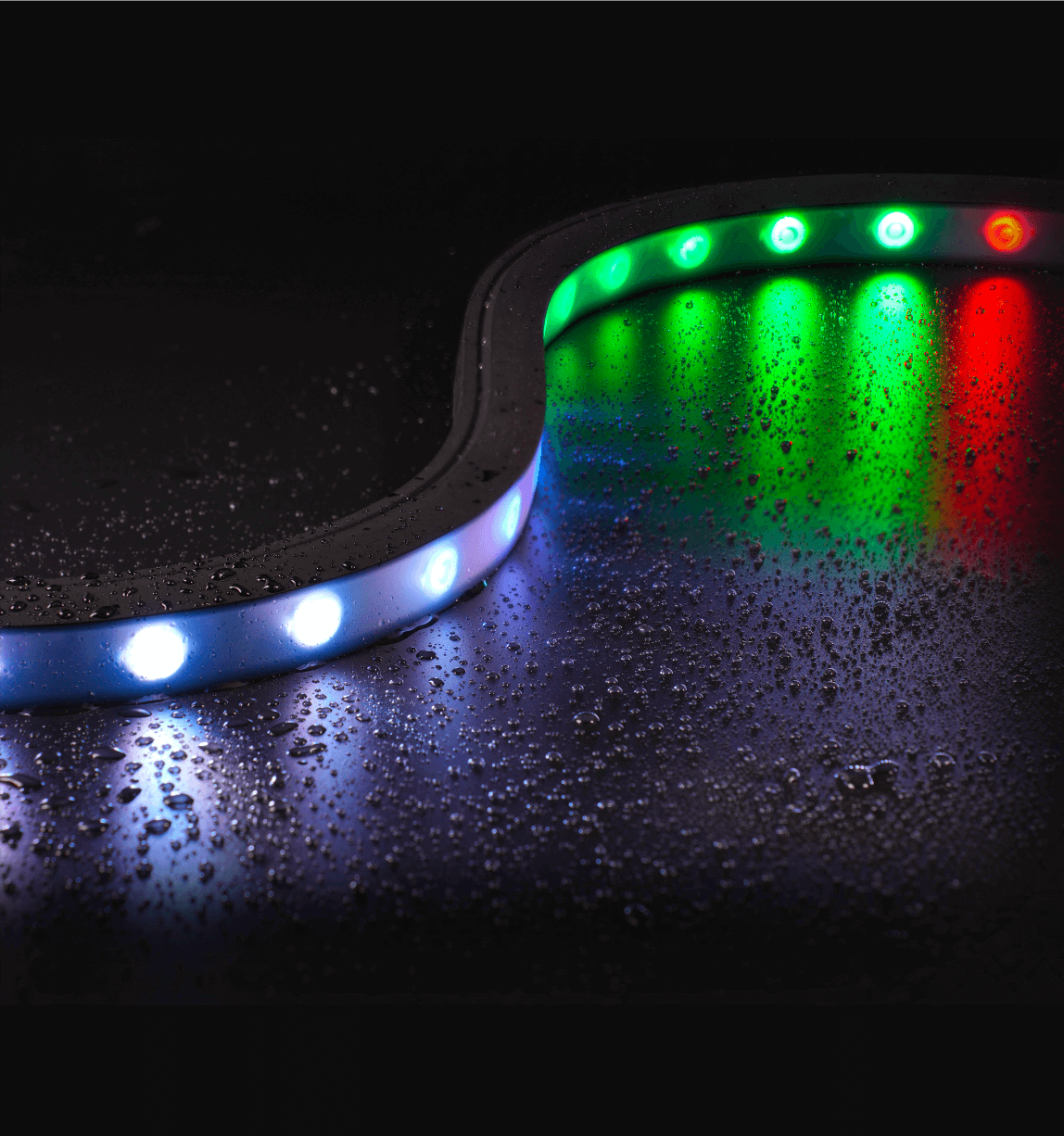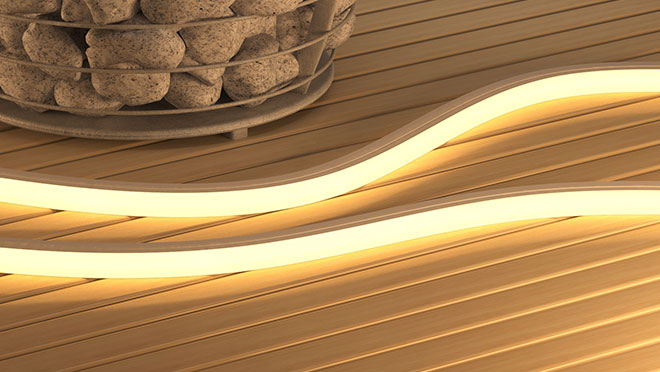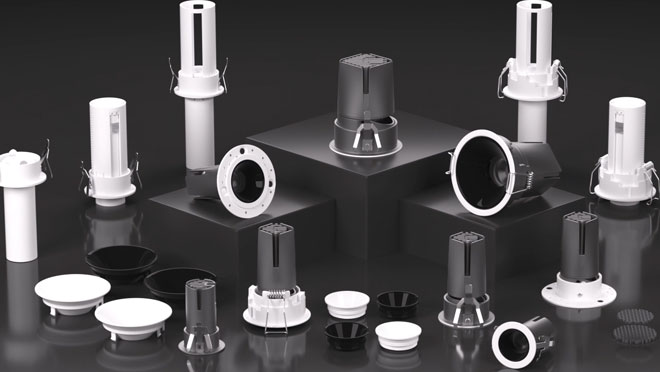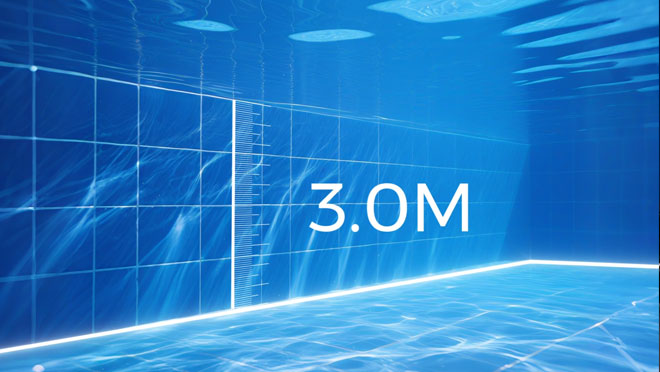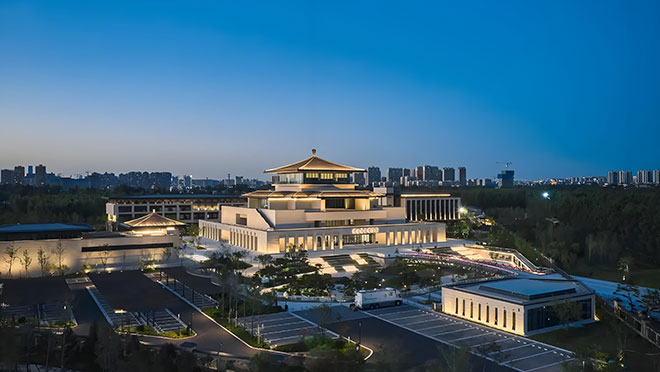What is Building Facade Lighting?
Building facade lighting is a technical approach involving systematic lighting design for the external surfaces of buildings using artificial light sources. Its primary objectives are to reshape a building’s nighttime image through artistic expressions of light, highlight its morphological features, material textures, and cultural connotations, while achieving harmonious coexistence with the urban environment.
6 Types of Building Facade Lighting
Based on architectural functions, morphological characteristics, and lighting design requirements, facade lighting can be categorized into six major types with their professional English descriptions as follows:
High-Rise Landmark Buildings
Positioning: As "urban regional landmarks", the design emphasizes enhancing architectural height and massing through lighting, while balancing energy efficiency and light pollution control. Dynamic lighting and intelligent control systems are mainstream trends, enabling diverse visual effects from festival-themed dynamics to daily ambient gradients.
Key Requirements: Prioritizes vertical illuminance and uniformity, balancing overall building brightness with local details to avoid glare affecting the surrounding environment.
Typical Methods: Adopts "Contour Lighting + Flood Lighting", using linear lights along rooftops and edges combined with long-range projection to create a clear urban skyline. Implements intelligent dimming to automatically adjust brightness and dynamic effects by time slots. Requires high-efficiency luminaires with professional light distribution to minimize diffused light pollution and achieve energy conservation.
Lighting Project: Tencent East China Headquarters Building
Public Cultural Buildings
Core Concept: Serving as "carriers of public life", the design restores architectural texture through precise projection while integrating cutting-edge lighting technologies for cultural storytelling. Non-contact projection and dynamic light art are trending, with long-range lighting preserving original structures and inner transmission lighting connecting indoor-outdoor spaces.
Key Requirements: Focuses on flexible multi-mode lighting to balance architectural functions, public safety, and humanistic care.
Typical Methods: Uses "Façade Projection + Under-Eave Flooding + Grazing Lighting" to highlight material textures and architectural temperament. Integrates projection technology for cultural narratives (e.g., historical scroll projections on museum facades). Employs concealed design, hiding luminaires within architectural structures or components to achieve a "no visible fixtures during daytime" effect.
Lighting Project: Shanxi Archaeological Museum
Commercial Block Buildings
Design Objective: Oriented toward "consumer attraction", the design stimulates commercial vitality through dynamic lighting and interactive experiences. Multi-dimensional light environment design (color temperature zoning, brightness gradients) and creating harmonious blends of nature and urban ambiance are emerging trends.
Key Requirements: Enhances vertical illuminance for window displays and guides customer flow via dynamic lighting to improve shopping experiences.
Typical Methods: Creates layered facade environments with varying color temperatures (e.g., warm 3000K for podium zones vs. cool 4000K for towers).
Installs touch-sensitive screens or dynamic light games for interactive engagement. Utilizes natural light sensors and time-sharing control to reduce energy consumption during non-business hours.
Lighting Project: Nivy Centre by HB in Slovakia
Low-Rise Residential Buildings
Core Focus: Centered on "livable living experiences", the design uses soft lighting to create privacy and a sense of belonging. Personalized customization and smart security lighting are mainstream, with linear light strips and motion-sensor lighting commonly used in villa designs.
Key Requirements: Balances functionality and aesthetics, avoiding excessive brightening that invades privacy, while integrating luminaires with architectural materials.
Typical Methods: Employs multi-layered lighting: indirect light for facades and low-position ambient lighting for courtyards to avoid glare. Matches lighting techniques to architectural styles (e.g., linear light strips for modern villas). Implements intelligent control with motion sensors and natural light adjustment for energy-efficient "auto-on/off" functionality.
Lighting Project: HAVE THE WORLD
Historical & Cultural Buildings
Mission: As "arenas for cultural inheritance", the design reproduces historical details through precise lighting, avoiding excessive light that damages original features. High-fidelity material simulation and intelligent dimming are widely used (e.g., LED string lights outlining Xi'an South Gate Wall roofs, contour lights highlighting Forbidden City bracket paintings).
Key Requirements: Strictly follows heritage protection standards, avoiding direct fixture contact with structures, and ensures harmony with surrounding historical districts.
Typical Methods: Uses localized precise projection with narrow-beam spotlights to highlight architectural decorations (e.g., glazed tiles, colored paintings).
Maintains uniform color temperature to visually unify old and new structural components. Adopts DC low-voltage power supply and anti-glare fixtures to protect nocturnal ecology.
Lighting Project: Wumen of the Forbidden City
Industrial Facilities & Heritage Sites
Design Philosophy: Embracing "dialogue between old and new", the design enhances industrial architecture's historical weight and modern adaptability through lighting. Combining preserved original structures with dynamic light art is innovative (e.g., Shanghai Oil Tank Art Center projecting animations on curved tanks while retaining rusted steel textures).
Key Requirements: Balances preservation and utilization, avoiding light damage to historical structures, while enabling multifunctional use via intelligent control.
Typical Methods: Uses structural exposure lighting to highlight industrial elements like concrete beams and metal trusses. Applies differentiated lighting by functional zones (high-CRI lighting for exhibition spaces, cool white light for public areas). Incorporates sustainable designs like solar panels and energy-efficient luminaires to reduce operational costs.
Lighting Project: Shijingshan Shougang Park Office Building
Building Facade Lighting Techniques
Methods for building facade lighting include cast lighting, inner transmission lighting, outline lighting, spot lighting, and digital lighting. In actual project applications, these techniques can be refined and extended to include:
Analysis of Building Facade Lighting by COLORS Lighting
Contour Lighting
Using linear lights along building edges or object perimeters to outline shapes through light-dark contrast. Functionally enhances nighttime shape recognition with a minimalist visual effect, characterised by "light as line" abstraction. Applicable to roof eaves, bridge railings, sculpture frames, and other structures commonly seen in urban landmarks (e.g., skyscraper top contours) and ancient architecture, such as cornice lighting.
Lighting Project
Cove Lighting
Hiding light sources in architectural recesses (e.g., ceiling coves or facade slots) to create indirect lighting via reflection/diffusion. Provides soft ambient light, reduces direct glare, and builds subtle spatial layers. Highlights the "light without fixtures" concealment, enhancing softness with diffusive materials. Suitable for indoor and outdoor ceiling edges, structural recesses, handrail interiors, and landscape retaining walls that require indirect lighting.
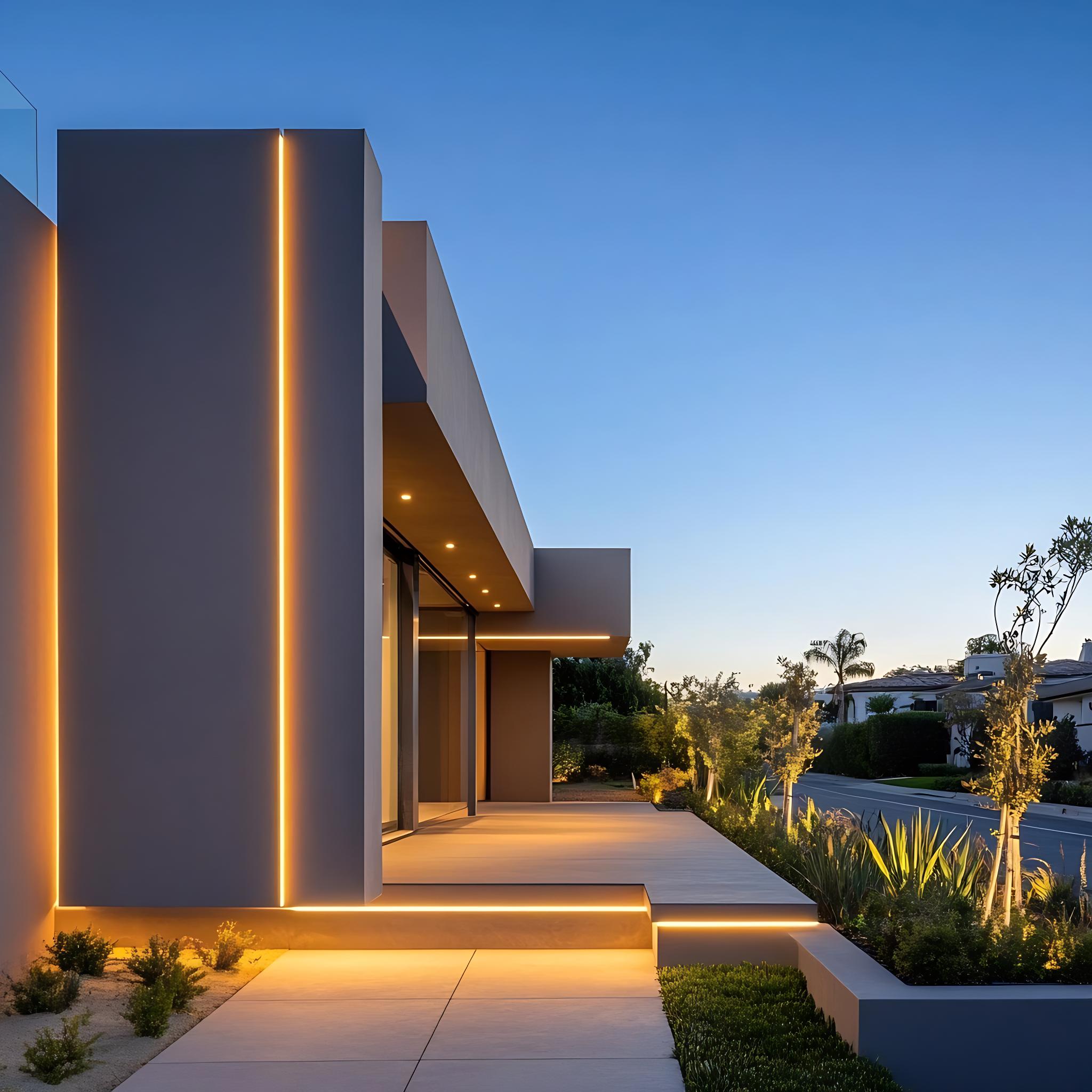 Lighting Project
Lighting Project
Under Eave Lighting
Installing projectors under or inside building eaves to cast upward/outward light on cornice details (e.g., brackets, decorative moldings). Enhances top-layer hierarchy of facades and balances vertical brightness ratios. Features light-shadow contrast to emphasise cornice three-dimensionality, ideal for ancient architecture eaves or modern cantilever structures.
Lighting Project
Façade Grazing Light-Downwards
Mounting fixtures close to wall tops to project narrow beams downward, revealing concave-convex textures (e.g., brick joints, reliefs) through subtle shadowing. Strengthens tactile perception of rough materials (stone, concrete, handcrafted bricks), suitable for historic building restorations and cultural venue facades.
Lighting Project
Façade Grazing Light-Upwards
Positioning fixtures near wall bases to project narrow beams upward, emphasising texture undulations via inverse light-shadow contrast, especially for bottom details. Creates dramatic effects with bottom-up lighting, ideal for museum exteriors, religious building pedestals, or modern art installations.
Lighting Project
Window Frame Lighting
Illuminating all four sides (top/bottom/left/right) of window frames with recessed linear lights or mini projectors to enhance structural rhythm and 3D layers. Transforms windows into facade focal points, improving nighttime readability of details. Features brightness differentiation (front sides highlighted, sides recessed) for depth, suitable for commercial complexes and libraries with high window-wall ratios.
Lighting Project
Stylish Lighting
Breaking traditional fixture forms to create artistic light installations (e.g., biomimetic lamps, light sculptures, modular designs), emphasising creativity and spatial storytelling. "Fixtures as art" integrates aesthetics and functionality, applied to building facades, cultural parks, public art spaces, and luxury hotel lobbies.
Lighting Project
Digital Lighting
Using programmable LED fixtures (pixel lights, wall washer matrices, RGB strips) to achieve dynamic effects (color changes, pattern flows, rhythmic flashing) via control software. Enhances interactivity and timeliness, creating immersive experiences. Fits commercial facades, theme parks, and festival venues, often paired with music/video for light shows.
Lighting Project
Inner Transmission Lighting
Placing light sources inside objects (e.g., glass curtain wall cavities) to emit light through translucent materials (glass, acrylic, silk), creating a light and airy effect. Minimizes fixture visibility while highlighting material translucency, ideal for "luminous body" imagery in stained glass churches or modern glass box buildings.
Lighting Project
Accent Lighting
Using narrow-beam fixtures (spotlights, track lights) to focus on specific objects (sculptures, displays, plants), creating visual focal points via 3-5x brightness contrast with ambient light. Guides sightlines and highlights themes, ideal for art gallery exhibits, retail window displays, and landscape feature plants.
Lighting Project
Low Position Ambient Light
Using low-mounted fixtures (ground lights, step lights, lawn lamps) to emit soft, glare-free light for near-ground comfort. Enhances pedestrian safety and approachability in slow-paced environments. Applies to walkways, hotel courtyards, and residential gardens, often layered with high-mast lighting for vertical illuminance gradients.
Lighting Project
LED Solutions Used in Building Facade Lighting
In the field of building facade lighting, traditional floodlights and wall washer lights have long been the mainstay. With the continuous evolution of architectural forms, design styles, and product technologies, outdoor protective flexible LED strip lights, silicone neon strips,
LED linear lighting products with special optical designs, and color-changing control systems are increasingly being accepted and utilized by designers and property owners.
CSP LED Strip Lights
CSP outdoor protective
LED strip lights feature anti-bending, anti-twisting and anti-tensile properties, and adopt flip-chip packaged LEDs. They can adapt to ambient temperatures ranging from -40°C to 60°C, with an IP67 protection rating, and are widely suitable for atmospheric lighting in architectural facade light slots, eaves, base angles, etc.
Silicone Neon Strip Lights
Silicone neon strip lights adopt high-quality gas-phase silica gel, made by tri-color co-extrusion process, featuring natural, smooth light and are easy to clean. It shows great resistance to saline solutions, acid & alkali, corrosive gases, fire and UV, great for Contour Lighting.
DIGITAL LED Strip Lights
The DIGITAL LED light strip has dynamic color-changing functions, is widely compatible with various dimming and lighting control systems such as DMX512 and SPI, and is commonly used for dynamic facade lighting. It can achieve decorative lighting, atmosphere creation, and festival scene transformation effects.
Linear Wall Washer Fixtures
Linear wall washer fixtures generally adopt aluminium lamp bodies, and their structural waterproofing processes can achieve an IP67. They offer options of large-angle floodlighting and small-angle spotlights, featuring high luminous efficiency, customization, and long-term outdoor usability. These fixtures are suitable for wall washing and grazing lighting on the facades of outdoor buildings and structures.
Recommended Product: HW-
LENS LED Strip Lights
LENS Strip basic on a silicon neon strip, provides different beam angles, and 3D bending in the long run, is suitable for curved wall washing and grazing indoors and outdoors.
Conclusion
COLORS Lighting, the
LED linear lighting solutions provider, specialises in the research, development, and manufacturing of high-quality lighting products, which have been certified by all major national markets and are exported to more than 100 countries and regions worldwide.
Our product portfolio covers Neon Strips,
LED Strips, Infinite Lights, Linear Lights, Track lights, and Downlights. COLORS Lighting provides integrated and professional lighting solutions for residential, hotel, office, commercial, and outdoor spaces.
We have a professional lighting design team, key projects to provide pre-design planning, mid-term selection simulation, post-installation and commissioning of professional support. For key projects, we can cooperate with designers and engineers to deepen the pre-sale product application program. Welcome to contact us and tell us which products you prefer, or let us know what type of lighting solution you need. Let us help your lighting project!
COLORS Lighting, Colorful Life!

![]()
![]()
![]()
![]()
![]()
![]()
![]()
![]()
![]()
![]()
![]()
![]()
![]()
![]()
![]()
![]()
![]()
![]()
![]()
![]()
![]()
![]()
![]()





































































































